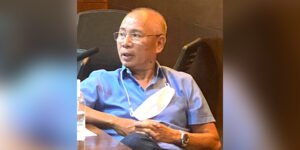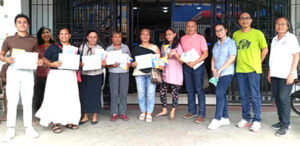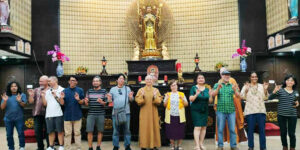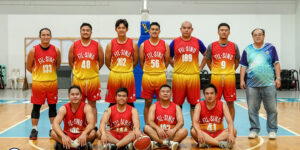
When was the last time you slowed down? If you can’t recall, perhaps it’s time to take it easy and enjoy yourself. I’m guilty of not allowing myself to rest or take short breaks. I often convince myself that I don’t have time for breaks when working on complex problems or feeling overwhelmed by tasks. When my to-do list is overflowing and I have deadlines to meet, I feel even more pressure not to slack off.
“This is not the time to take it easy,” I’d remind myself. Perhaps it’s the news culture that has normalized the idea of relentlessly chasing and beating deadlines. Journalists operate around the clock, facing numerous deadlines daily, all while ensuring the quality and accuracy of the stories they tell to inform and educate their global audience.
For a journalist, skipping meals, naps, constantly gathering stories, chasing sources, and working in stressful environments are not unusual. They are accustomed to the unusual, uncomfortable, and traumatic aspects of their work. Journalists are expected to be quick, productive, calm, and composed even under the most toxic conditions, with a mindset of overcoming challenges. Missing a deadline could mean figurative death, as there’s always a story to tell and a deadline to meet.
I’d argue that journalists are the ones who need short breaks and pauses in their toxic routines the most. However, in reality, they can hardly take a day off, as news can break at the most unexpected times. Once a story breaks, saying “no” is the most difficult thing for a journalist, as it is inherent upon them to pursue and tell the story to create awareness and provide the audience with the education and enlightenment they need.
However, these practices are unhealthy as these can lead to exhaustion, anxiety, and burnout. While fellow journalists are aware of this, it is their passion for the profession and the purpose they find in their work that often leads them to disregard their personal need for space and take a breather to re-energize.
During a one-on-one life and career coaching session with Coach Pat Mallari, a certified professional transformative coach, last week, she emphasized the value of taking breaks, especially when faced with challenges. She asked me to describe my routine at work and outside of work, which led her to inquire about how I de-stress after a full day. When she couldn’t identify a gap in my numerous tasks and activities, coupled with my admission that I’m uncomfortable with idle time, she quickly labeled me as a Type A person.
A Type A person’s behavior and personality are characterized by high achievement, competitiveness, and a strong motivation to achieve results. Moreover, Hisam et al. (2014) described individuals with Type A behavior patterns (TABP) as ambitious, rigidly organized, and workaholics, who multitask and push themselves with deadlines while disliking delays and ambivalence. However, Type A individuals are also more likely to experience anxiety and burnout due to their relentless drive and perfectionism. Research shows Type A has a positive association with stress.
“Slow down to speed up,” was Coach Pat’s blunt advice to me. While she acknowledged people’s passion, commitment, and dedication to their professions, she was frank in pointing out that pushing further when I need to take a pause is detrimental to my health and the quality of my work.
Her interjection resonated with me. It’s not a new concept; in fact, it’s quite cliché. However, it’s often easier said than done, especially for people with a strong achievement orientation and demanding jobs. Even if it’s cliché, the timing of that reminder was impeccable. It came to a point in my career where I was feeling anxious because of deadlines I had to meet and tasks that sometimes seemed impossible. Sometimes, I think it’s just my mind playing tricks on me, and having the right mindset would solve the problem.
On the other hand, it could also be that, like a gadget, people also need to reset, to function effectively. Just like how a gadget needs to reset to clear out glitches and improve performance, taking breaks and allowing ourselves to reset can help us regain focus, clarity, and energy. It’s about recognizing when we’re reaching our limits, and permitting ourselves to step back, even briefly, to recharge and come back stronger. This approach can ultimately lead to better productivity and a healthier work-life balance.
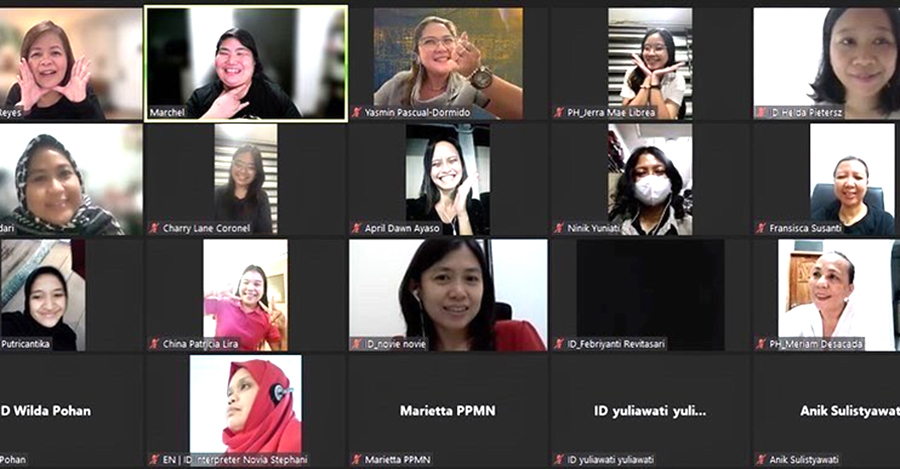
WIN LEADERSHIP ACCELERATOR
I am fortunate to have discovered a support system and community among fellow women journalists through the Women In Asia (WIN) Leadership Accelerator. This program is a rigorous nine-month career and leadership program designed for journalists and editors in Africa, the Arab Region, and Southeast Asia. One-on-one coaching is a requirement of the program I am currently undertaking as a fellow of the Women in News (WIN) Leadership Accelerator. Coach Pat serves as our life and career coach, guiding us on our journey to achieving work-life balance.
The program brings together not only female journalists but also women leaders who share and learn from each other’s stories of struggle, triumph, frustration, inequity, and discrimination.
I had the opportunity to reconnect with our former Integrated News and Current Affairs Head at ABS-CBN, Ms. Ging Reyes, during two sessions on April 4. Ms. Reyes retired from the network in 2022 after 36 years in broadcast journalism, including 12 years as the news chief of one of the country’s leading media organizations.
Ms. Ging, who was honored as the 2022 Southeast Asia Laureate for Women in News Editorial Leadership by the World Association of News Publishers (WAN-IFRA) in Spain in September for her editorial integrity and leadership, shared insights with us on leadership, highlighting the distinction between being a boss and being a leader.
She underscored that bosses give orders, while leaders understand the practice of guiding and directing their team, providing clarity in assigning roles, and holding people accountable. Furthermore, she encouraged subordinates to enhance their ability to collaborate with superiors and assist them in being more strategic to effectively accomplish team objectives. She underscored the crucial role of agency, advocating for speaking truth to power. During the session, a wealth of insights emerged as all women journalists engaged with the resource speaker, particularly when discussing “Leadership in the Age of Social Media.” Participants shared their experiences, enriching the discussion.
Fellowships like this are incredibly empowering as they embrace a diversity of voices and promote inclusivity. Diverse perspectives drive innovation by offering a variety of thinking styles and drawing on different life and professional experiences.
Implementing specific programs like the WIN Accelerator will significantly support women in succeeding at work and advancing into leadership roles as women continue to break barriers and shatter glass ceilings.*

